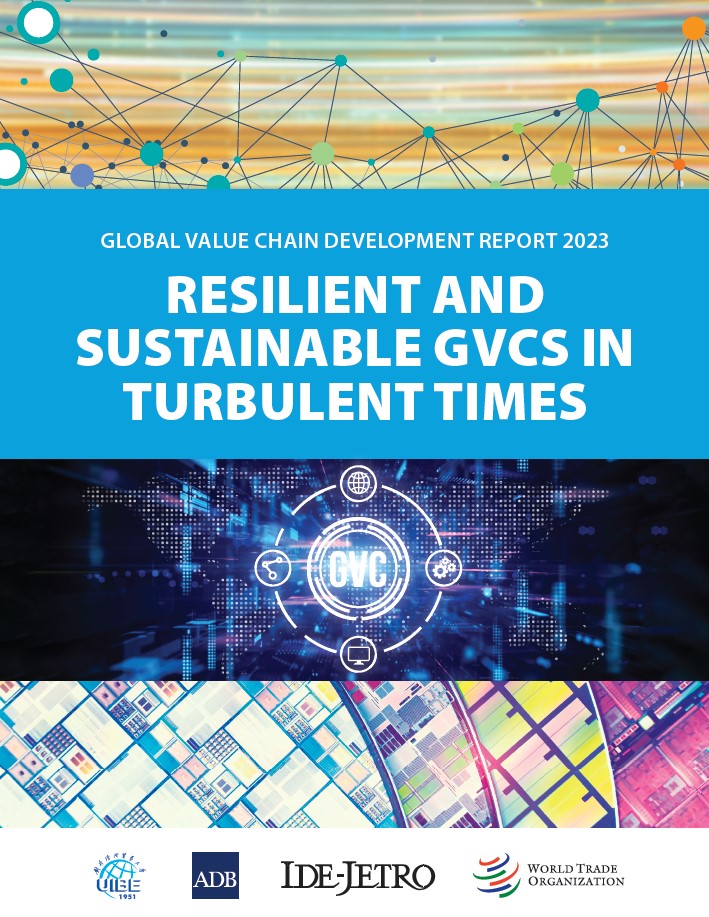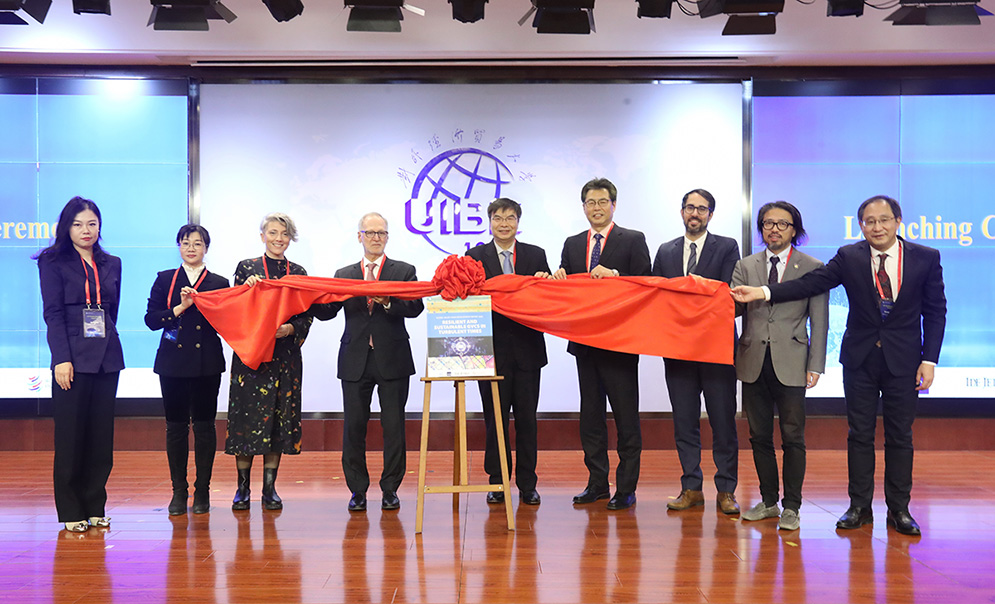PUBLICATIONS
More
The report, titled “GVC Development Report 2023: Resilient and Sustainable GVCs in Turbulent Times”, is a joint publication by the Asian Development Bank (ADB), the Institute of Developing Economies — Japan External Trade Organization (IDE-JETRO), the Research Institute for Global Value Chains at the University of International Business and Economics (UIBE) Beijing, and the World Trade Organization.
“Recent pandemic-related disruptions have revealed long-standing vulnerabilities in GVCs, especially those associated with over-concentration and over-dependence on a single economy or region for the supply of critical products — a circumstance exacerbated by recent geopolitical tensions. However, the current structure of GVCs is complex and has led to significant benefits for firms and consumers globally,” ADB President Masatsugu Asakawa, IDE-JETRO President Kyoji Fukao, UIBE President Zhongxiu Zhao, and WTO Director-General Ngozi Okonjo-Iweala say in the joint foreword of the publication.
“Resilience and sustainability cannot be achieved without inclusiveness,” they add. “To ensure that GVCs support inclusive development, barriers to integration must continue to be lowered and measures must be put in place that prevent firms from exploiting their market power at the expense of small suppliers.”
The report provides an update on trends in GVCs with new data extending until 2022, highlighting that GVCs remain a central part of globalization despite mounting pressures. Foreign inputs comprised 28% of global merchandise exports last year, a record level according to the report. Moreover, GVC participation rates of almost all economies were higher in 2022 compared to their pre-pandemic levels in 2018.
The report looks into how US-China trade tensions and the COVID-19 pandemic have affected GVCs, with an in-depth discussion of energy and semiconductor supply chains. The report finds that the export value and share of potential bottleneck products — products that are exported by very few economies — has more than doubled since 2000, from 9% to 19% of total trade, contributing to the vulnerability of GVCs. Also, there has been considerable concentration in sources of foreign inputs. Furthermore, US-China trade tensions have led to an increase in the number of stages in GVCs from 2018 to 2020. This could be due to economies sourcing products from new sources as a result of the imposition of higher tariffs but in 2021 some of this lengthening of GVCs reversed, likely due to the pandemic limiting the options available.
On sustainability, the report provides a comprehensive carbon emissions accounting framework that traces greenhouse gas emissions along GVCs and proposes a conceptual framework for helping to make GVCs more environmentally friendly.
The report emphasizes that GVCs can lead to positive outcomes for firms in developing economies by improving productivity and alleviating constraints and can result in higher wages and better working conditions. Policies for making GVCs more inclusive should focus on facilitating entry into GVCs and increasing positive spillovers into the domestic economy, the report states.
The report is available here.
Share
Share
Problems viewing this page? If so, please contact [email protected] giving details of the operating system and web browser you are using.

